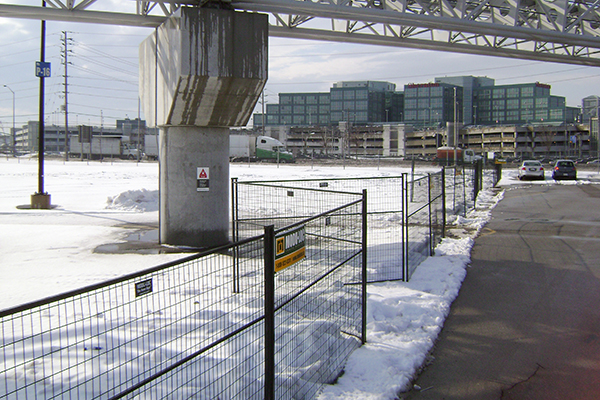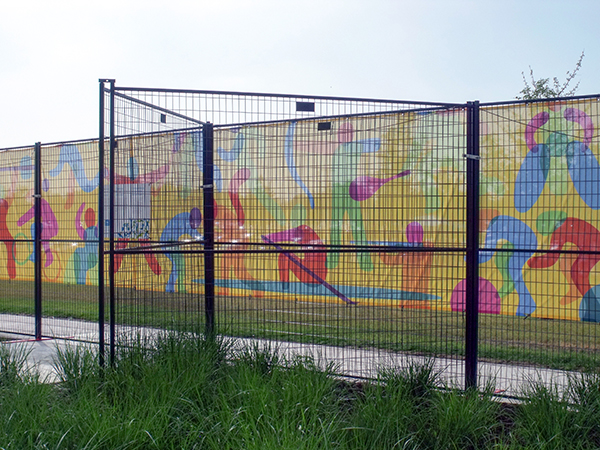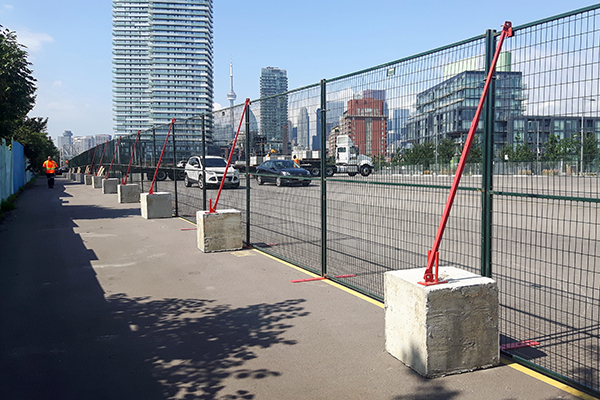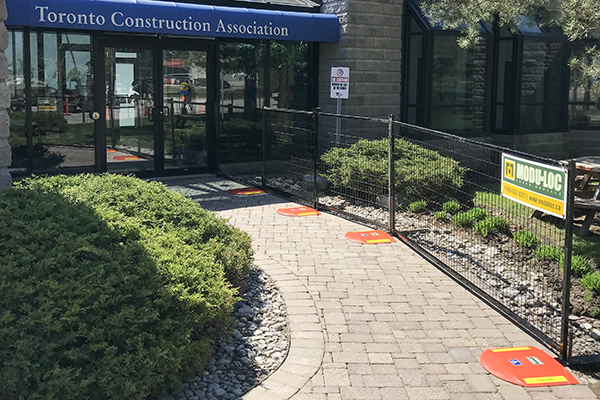Best Practices for Installing Modu-Loc Fence
July 12, 2018Last week, we shared the basics of installing Modu-Loc fence. If that was “Fence Installation 101”, then think of this week’s post as the advanced class. There is a bit of a science to setting up temporary fence, and incorrect installation can result in a fence line that is more “safety hazard” than “perimeter protection”.
We train our Fence Guys to consider a number of factors on site to optimize the safety, stability and security of our temporary fence. If you choose to install temporary fence yourself, knowing what to look for can reduce your risk of liability and ensure your site is properly protected. In this post, we’ll highlight some of the best practices that form the foundation for our Fence Guy training curriculum.
V-Bracing or Triangle Bracing
Long, straight lines of fence can be unstable – particularly if you add banners, high winds, or uneven terrain. At Modu-Loc, we use v-bracing or triangle bracing to stabilize long lines of fence. Both configurations involve connecting two additional fence panels to the fence line in a “v” formation. This can either be done by creating a v-shaped “kink” in the fence line (good practice), or by attaching two panels to an existing fence line to form an integrated triangle (best practice). Below are examples of each.


We recommend using triangle bracing (shown in the bottom photo) when possible, as it is the more stable of the two techniques. As a best practice, we use v-bracing or triangle bracing at 50 foot intervals along straight lines of fence. If you want to optimize the stability of your longest fence lines, plan to order an extra 2 panels for every 5.
Alternatives to V-Bracing
If you don’t have room to add v-bracing on either side of the fence line, you can use one of the following stability accessories:
- Wind braces
- T-bars
- Spikes
- Concrete blocks (shown with wind braces, below)
- Sandbags

Alternatively, consider taking advantage of nearby permanent structures (trees, posts, permanent fence, etc.). Temporary fence panels can be tied to permanent structures to reinforce the fence line.
Overlapping Panels
Sometimes it’s necessary to overlap panels to achieve the correct length of fence. Our Fence Guys will use wire – or better yet, u-bolts – to secure overlapped panels.
Fence Bases
Fence bases are an inherent trip hazard. We’ve minimized this risk by making our bases a high-visibility orange and as low-profile as possible without compromising their integrity. However, you should take special care to ensure that the bases are flat against the ground when installing your temporary fence. Any base that is raised off the ground will increase the risk of a trip and fall, so install your fence line on flat, level ground whenever possible.
Similarly, using a base on a corner can create a trip hazard. Wherever two fence lines meet to form a corner, Modu-Loc best practice is to use a cap to connect the panels both at the top and the bottom (as shown below). This also applies to v-bracing, if the corner of the v-brace protrudes into a pedestrian pathway. Placing a base on a corner creates an unnecessary risk.

Pedestrian Pathways
Make sure that sidewalks and footpaths are clear of bases or other obstructions. Even if you’ve made sure that all fence bases are flat against the ground, your safest option is to simply avoid having bases protruding into pedestrian walkways. If possible, shift your fence line so that it does not obstruct any pathways.
If moving the fence line is not an option, consider installing safety ramps (pictured below) or delineators with metal boots. Either option will help reduce the risk of a trip and fall.

By installing your temporary fence solution to Modu-Loc standards, you’re ensuring that your set-up is as safe and secure as possible. Ask your local sales representative about our safety and stability accessories to optimize your temporary fence system. Don’t forget to keep checking our blog for future tips and best practices!
We’re here to answer any questions you may have.



 Canada - EN
Canada - EN Canada - FR
Canada - FR United States
United States




